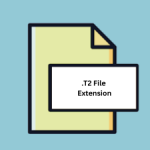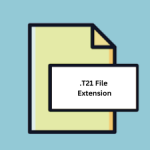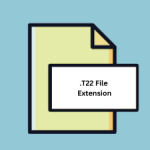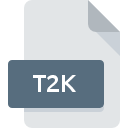.CXA File Extension
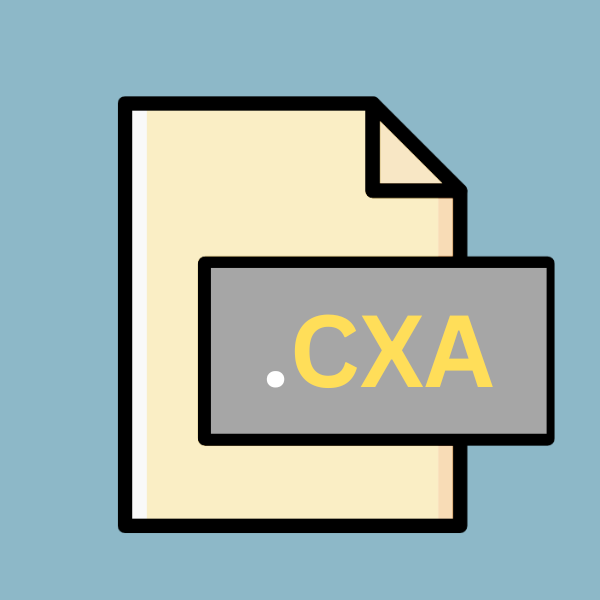
FMAT Listmode File
| Developer | Applied Biosystems |
| Popularity | |
| Category | Data Files |
| Format | .CXA |
| Cross Platform | Update Soon |
What is an CXA file?
.CXA files, also known as FMAT List mode files, are a specific file format commonly used in the field of medical imaging, particularly in positron emission tomography (PET) and single-photon emission computed tomography (SPECT) imaging.
These files store raw data collected during imaging procedures, providing valuable information for analysis and reconstruction of images.
More Information.
The history of the .CXA file format can be traced back to the development of Listmode data acquisition systems in nuclear medicine.
Listmode data refers to the collection of individual event data, such as the time of detection and energy level, from each recorded event during the imaging process. These data are crucial for reconstructing images with high resolution and accuracy.
The initial purpose of .CXA files was to provide a standardized format for storing Listmode data efficiently.
This format allows researchers and medical professionals to analyze and process the raw data to extract meaningful information about the distribution and activity of radiopharmaceuticals within the body.
Origin Of This File.
The .CXA file extension originated from the need to efficiently store and manage data collected during medical imaging procedures.
As technology advanced in the field of nuclear medicine, there arose a necessity for standardized file formats to handle the vast amounts of data generated by imaging devices.
File Structure Technical Specification.
.CXA files follow a structured format designed to store Listmode data efficiently. While the specific structure may vary depending on the imaging system and software used, the general components of a .CXA file include:
- Header: Contains metadata about the acquisition parameters, such as the type of imaging modality, acquisition time, and system configuration.
- Event Data: This section stores the raw event data collected during the imaging procedure. Each event typically includes information such as the detection time, energy level, and spatial coordinates.
- Optional Parameters: Some .CXA files may include additional parameters or metadata specific to the imaging system or study protocol.
How to Convert the File?
Converting .CXA files to other formats may be necessary for compatibility with different software or analysis tools. Several methods can be used to convert .CXA files, depending on the desired output format and available software tools. Here’s a general guide on how to convert .CXA files:
1. Using Specialized Medical Imaging Software:
- Step 1: Install and open specialized medical imaging software that supports .CXA files. Examples include PMOD, OsiriX, and Amide.
- Step 2: Open the .CXA file using the software’s file menu or drag-and-drop functionality.
- Step 3: Once the file is open, look for an option to export or save the file in a different format. Common formats for conversion include DICOM, NIfTI, or Analyze.
- Step 4: Follow the on-screen prompts to select the desired output format and adjust any conversion settings if necessary.
- Step 5: Click “Convert” or “Save” to initiate the conversion process. The software will then generate the converted file in the specified format.
2. Using Command Line Tools (Linux/Unix):
- Step 1: If you’re comfortable with the command line interface, you can use command-line tools to convert .CXA files. One such tool is dcmtk, which is a collection of command-line utilities for DICOM files.
- Step 2: Use the appropriate dcmtk command to convert the .CXA file to your desired format. For example, to convert to DICOM, you can use the dcmtk command dcm2dcm.
- Step 3: Specify the input .CXA file and the output format and filename as arguments to the command.
- Step 4: Execute the command, and the tool will convert the .CXA file to the specified format.
- Step 5: Check the output directory for the converted file.
3. Using Online Conversion Services:
- Step 1: If you prefer a web-based solution, there are online conversion services available that can convert .CXA files to various formats.
- Step 2: Visit a reputable online conversion service that supports medical imaging file formats.
- Step 3: Upload your .CXA file to the conversion service through the provided interface.
- Step 4: Select the desired output format for conversion. These services often support formats like DICOM, NIfTI, or JPEG.
- Step 5: Initiate the conversion process, and the service will generate the converted file.
- Step 6: Download the converted file from the conversion service’s website.
4. Using Programming Libraries (Python, MATLAB, etc.):
- Step 1: If you’re comfortable with programming, you can use programming libraries to read .CXA files and convert them to other formats.
- Step 2: Choose a programming language and a suitable library for reading medical imaging files. Examples include Python libraries like pydicom or MATLAB’s Image Processing Toolbox.
- Step 3: Write a script to read the .CXA file, extract the necessary data, and save it in the desired output format.
- Step 4: Execute the script, and it will generate the converted file in the specified format.
Advantages And Disadvantages.
Advantage:
- Efficient storage: .CXA files efficiently store Listmode data, reducing the storage space required compared to storing individual event files.
- Standardized format: The .CXA format provides a standardized way to store and exchange Listmode data, ensuring compatibility across different imaging systems and software.
- Enables advanced analysis: The raw data stored in .CXA files allow for advanced analysis techniques, such as kinetic modeling and dynamic image reconstruction, to extract valuable insights from the imaging data.
Disadvantage:
- Complexity: Working with .CXA files may require specialized software and expertise in medical imaging and data analysis.
- Limited compatibility: While .CXA is a standardized format, compatibility issues may arise when trying to open or convert files using different software or versions.
- Data loss risk: Improper handling or conversion of .CXA files may result in data loss or corruption, potentially affecting the accuracy of image reconstruction and analysis.
How to Open CXA?
Open In Windows
To open .CXA files in Windows, users can utilize specialized medical imaging software such as PMOD or Amide.
These programs provide comprehensive tools for viewing, analyzing, and converting .CXA files to other formats compatible with Windows applications.
Open In Linux
In Linux environments, software packages like AMIDE and OsiriX offer support for opening and converting .CXA files.
Users can install these programs using package managers like apt or download them directly from the respective project websites.
Open In MAC
Mac users can use software such as PMOD, OsiriX, or Amide to open and convert .CXA files on macOS systems.
These applications provide a user-friendly interface and comprehensive features for working with medical imaging data.
Open In Android
While Android devices may not have native support for opening .CXA files, users can utilize specialized apps available on the Google Play Store.
Apps like MicroDicom Viewer or AMIDE Mobile offer limited functionality for viewing medical imaging data, including .CXA files, on Android devices.
Open In IOS
Similarly, iOS devices do not natively support .CXA files, but users can explore apps available on the App Store for viewing medical imaging data.
Apps like OsiriX Mobile provide limited functionality for opening and viewing .CXA files on iOS devices.
Open in Others
For other platforms or custom software solutions, developers may need to implement support for .CXA files using programming languages such as Python or C++.
Libraries like ITK (Insight Segmentation and Registration Toolkit) offer functionalities for reading and processing medical imaging data, including .CXA files, in custom applications.
